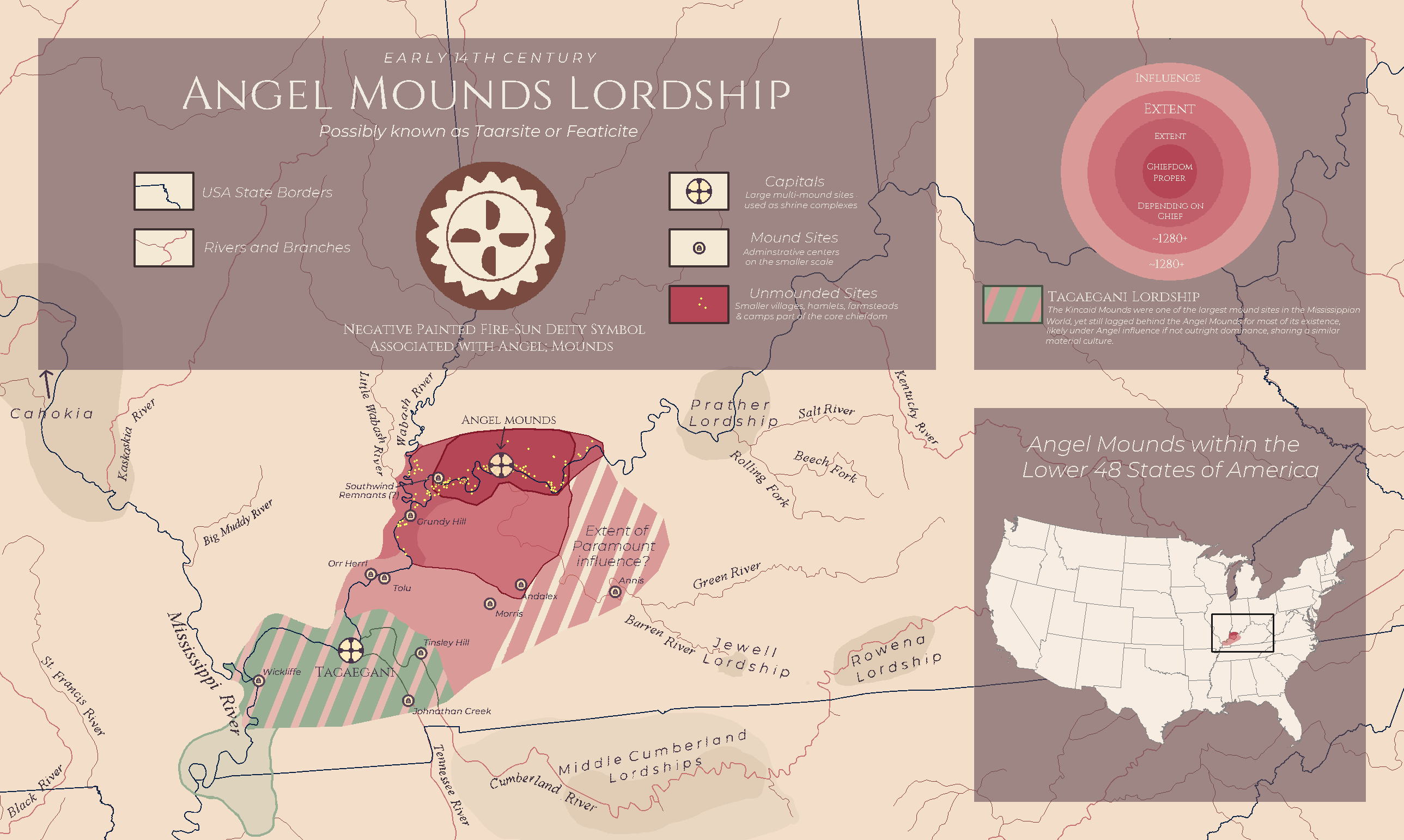Mississippian Culture Map of Western Kentucky


David Chen
Data Visualization Specialist
David Chen is an expert in transforming complex geographic datasets into compelling visual narratives. He combines his background in computer science ...
Geographic Analysis
What This Map Shows
The "Angel Mounds Lordship: Mississippians in Western Kentucky" map provides a detailed visualization of the cultural and geographic landscape of the Mississippian civilization that thrived in this region. It highlights the locations of significant archaeological sites, including the prominent Angel Mounds site, which serves as a testament to the sophisticated society that once flourished here. The visualization offers insights into settlement patterns, trade routes, and the environmental features that influenced the daily lives and societal structures of the Mississippians.
Deep Dive into Mississippian Culture
The Mississippian culture, which existed from approximately 800 CE to 1600 CE, is renowned for its complex societies, monumental architecture, and extensive trade networks. Centered primarily in the southeastern United States, this culture significantly impacted the regions of Kentucky, Illinois, Indiana, and beyond.
At the heart of the Mississippian way of life was a network of chiefdoms, each ruled by a paramount chief who wielded considerable power and influence. The Angel Mounds site in particular is a prime example of this hierarchical structure, showcasing a large ceremonial center that was likely the political and religious hub of the region. Interestingly, the mounds themselves, constructed from earth and clay, served multiple purposes: as burial sites, platforms for important buildings, and as symbols of status and power.
The Mississippians were adept agriculturalists, cultivating staples such as maize, beans, and squash, which formed the backbone of their diet. This agricultural proficiency allowed them to support larger populations and sustain complex societal structures. What's fascinating is that the strategic location of the Angel Mounds site along the Ohio River facilitated trade and interaction with other Mississippian settlements, enhancing cultural exchange and economic prosperity.
In terms of material culture, the Mississippians produced intricate pottery, tools, and jewelry, often adorned with symbolic motifs that reflected their beliefs and social status. Archaeological findings from Angel Mounds reveal a wealth of artifacts, including shell beads, stone tools, and painted pottery, which provide crucial insights into their daily lives and spiritual practices.
Regional Analysis
The map shows a concentration of Mississippian sites in western Kentucky, with Angel Mounds as a focal point. Surrounding this key location are other significant sites like the Cahokia Mounds in Illinois, which served as a major urban center and is often regarded as the largest pre-Columbian settlement north of Mexico.
Comparing these sites reveals variations in cultural practices and societal organization. For instance, while Angel Mounds was primarily a ceremonial site, Cahokia was a bustling urban hub with an estimated population of 20,000 at its peak. This stark contrast highlights how geography influenced the development of Mississippian societies. The fertile floodplains near major rivers allowed for intensive agriculture and supported larger populations, while areas with less favorable conditions would have had smaller, more dispersed communities.
Interestingly, the trade networks established by the Mississippians extended well beyond their immediate surroundings. Artifacts from Angel Mounds have been found to contain materials sourced from as far away as the Gulf of Mexico and the Great Lakes. This emphasizes the interconnectedness of Mississippian societies and their ability to thrive through commerce and cultural exchange.
Significance and Impact
Understanding the Mississippian culture and its geographical context is essential for several reasons. Firstly, it sheds light on the complexities of pre-Columbian societies in North America, challenging the notion that these cultures were simplistic or primitive. Furthermore, the study of sites like Angel Mounds provides valuable insights into how environmental factors shaped social structures, economic practices, and cultural development.
Today, the legacy of the Mississippians can still be seen in modern-day cultural practices of Native American tribes in the region. Moreover, preserving archaeological sites like Angel Mounds is crucial for educational purposes, allowing future generations to learn about the rich history of their ancestors. As we continue to explore and understand these ancient cultures, we can better appreciate the profound impact they had on the development of North American societies and the rich tapestry of human experience.
In conclusion, the "Angel Mounds Lordship: Mississippians in Western Kentucky" map is not just a geographical representation; it’s a window into the past, illuminating a vibrant and complex civilization that laid the groundwork for future generations. As we delve into the history of the Mississippians, we uncover a story of resilience, innovation, and cultural richness that continues to resonate today.
Visualization Details
- Published
- September 20, 2025
- Views
- 56
Comments
Loading comments...